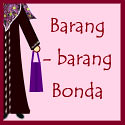Not to be confused with 'gibberish'
Anisish is a unique language spoken (and never written) by only one person in this world, namely Anis Suhaila Mohamed Taufik. It is, however, understood by a few people within the speaker's social circle, which includes her parents, siblings, grandmother (sometimes) and her acquaintences in Taska Salsabiila. Other dialects of Anisish has been heard to be spoken by several other members of the population outside the abovementioned circle, though in slightly different versions. It is interesting to note that these members of the population are usually under the age of 5 and could easily be understood by their mother.
The root language if Anisish is a combination Malay and English. The main discerning pattern is the replacement of the pronounciation of certain letters are replaced by other letters.
The K sound is most often than not, replaced with sh or tch, except when it's the last letter of the word, where it would magically be pronounced impeccably.
Therefore "Nak shopok" can be translated to "Nak Keropok" (Want a fish cracker), and 'Tchencin' is 'Kencing' (pee)
R is often replaced by y or not spoken at all. This is unlike Ihsanish, that replaces the Rs with either a W or a very soft rolling Rh. Examples of these are 'Beyak' (err u know what) and 'Shayot' (Carrot).
T and C are interchangeable. Sometimes, they are also replaced by the ubiquitous sh.
Examples:
"Hello Shat" (Hello Cat)
"Tat nak shopok?" (Cat nak keropok?)
"Shopok jenyan shitap" (Keropok dengan Kicap) (fish crackers with soy sauce)
D is somewhat a confusing letter in Anisish, since sometimes it could be pronounced clearly, sometimes it'd be pronounced as j, as with the case of the word 'Jenyan' (Dengan)(With). Somehow Anisish for 'Bonda' is 'Bonda'.
Anisish does whatever they like with the letter P. They may omit it whenever they like or use it to replace other letters whenever they like, as evident in this statement recorded a few days earlier:
"Shonjbob sharepang shonjbob parepang shonjbob.... sharepang!! ayayayayay..."
Anisish can be quite a confusing language for the unfamiliar, but it is easy to understand the speaker if you really pay attention to what they are doing and/or pointing at.
Sometimes if stories related to you in Anisish seems to boggle you, it might be smart and polite to just go "uh uh? really? That is *so* interesting!!". This would trigger a happy smile on the speaker and you might just be rewarded with an invitation to 'shiss' or do an 'eshimo' (which involves rubbing of your noses together).
why is it that when you try hard to look your best, a zit the size of kilimanjaro will always appear at the most prominent places?



No comments:
Post a Comment